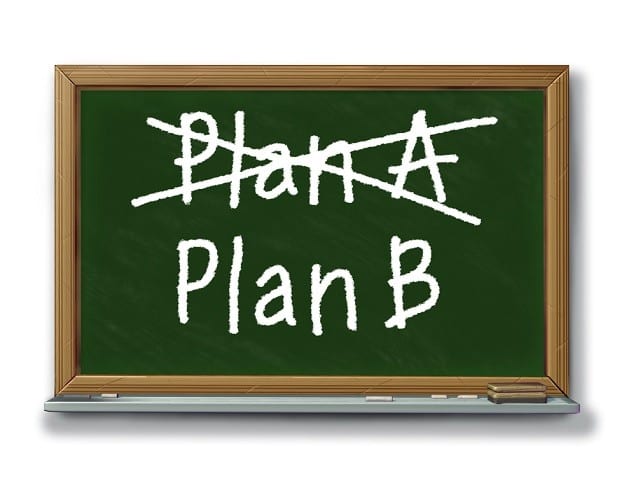How to Prepare Your Financial Emergency Kit

You might have solid investments and a good estate plan. But your financial planning isn’t complete without a financial emergency kit. An ideal time to put one together is when you are working on your estate plan.
A financial emergency kit is a set of tools that can keep a difficult time from becoming much worse, and it can help avoid some problems. The time when a kit is most urgently needed is when you are incapacitated or disabled. But there are other times when one or more elements is needed. Here is my list of the essential elements of a solid financial emergency kit.
- Your records should be in order, up-to-date, and easy-to-find. Often I run into people who know everything they own and where to find the records. That doesn’t do your loved ones any good. Organize things so that anyone can quickly get a handle on your finances. Then let a few key people know where the records are. You might even walk through the records with them. Reorganize the records each year.It is a good idea to keep a personal income statement and balance sheet (listing your assets and liabilities) that are revised about once a year.
- Give someone a power of attorney to handle your finances. If you don’t have one and become disabled, a court has to appoint a guardian. This costs time and money. The appointed person also might not be someone you would have picked. Make the decision ahead of time by preparing a power of attorney that names one or more individuals to run your affairs and one or more contingent persons in case one of the primaries is unavailable.The exact document you need depends on your state. In some states a durable power of attorney does the job; in others it is a springing power of attorney. If the bulk of your property is in a living trust, the trust itself should do the job by defining a trustee’s incapacity and providing for a substitute trustee in case of incapacity.
- Be sure you have cash, credit, or both. In an emergency, you or your loved ones shouldn’t be bothered with finding and raising money. You should have three to six months’ expenses in liquid assets that can be accessed easily and quickly. Money market funds or interest-paying checking accounts are good places for this cash.It doesn’t hurt to have credit lined up for longer-term situations or sudden large expenses. A crisis with time pressure is not a good time to be borrowing money. Most people these days can get a few credit cards with large borrowing limits. Another option is to set up a home equity line of credit that lets you draw on it simply by writing a check.A margin loan against an investment portfolio is an easy, low-cost way to borrow money. Ask your broker what is involved in getting a margin loan, what the cost is, and what forms they would need on file for money to be borrowed in an emergency.Business owners should consider establishing a line of credit upon which the business can draw if cash is needed in a hurry.
- Keep your insurance in order. A personal liability umbrella often is an excellent, low-cost addition to a homeowners’ policy. You can protect yourself against millions of dollars in liabilities for a few hundred dollars or less per year. The standard umbrella policy is for $1 million of coverage. But most people these days should seriously consider increasing that to $3 million or $5 million of protection. The umbrella will not cover liabilities incurred in your business or profession. So line up separate liability coverage for business activities.Disability insurance is an overlooked coverage. Statistically a person of almost any age is more likely to become disabled than to die. Of course, the odds of being disabled decrease if you work in an office and do not engage in any hazardous activities. If you get disability coverage, be sure that coverage is triggered when you are unable to perform your regular job. You won’t get much benefit if the policy pays only if you are unable to perform any occupation. You can greatly reduce the cost of premiums by providing that the policy pays only if you are disabled for an extended period, such as more than 90 days or six months.
- Review all your beneficiary choices. These include IRAs, pensions, 401(k)s, life insurance, health insurance, and other benefits. It is not unusual for a person to have designated a beneficiary before getting married (or divorced) and never change it.It is a good idea to name a contingent beneficiary for everything. Then, if for some reason the initial beneficiary does not take the benefit, someone you chose will. Suppose you have three adult children and name them as co-beneficiaries. What happens if one of them dies? In most standard forms, the other two adult children split the property. Any children of the deceased adult child get cut out. That’s why it is a good idea to review the beneficiaries and to understand what happens if your first choice doesn’t get the benefits. You might need a lawyer’s help to get the result you want.Ask your employer or other plan sponsor who they have listed as the beneficiary and contingent beneficiary. Your records and your will don’t count. Only the records of the sponsor determine who gets the benefit.
- Get started. It takes a while to put together the complete financial emergency kit. Don’t feel you have to do it all at once. Line up one thing at a time. Once you have everything set up, it will be a fairly easy task to review and update the kit every 12 to 18 months. You’ll be glad to have done all the work if you or your loved ones ever need to use the financial emergency kit.
![]()





